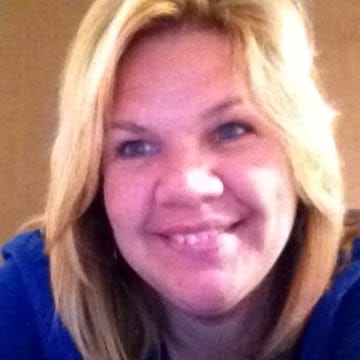
Before joining PresenceLearning, Cheryl M., CCC-SLP, practiced speech language pathology for 19 years in K-5 in public schools. She’s been working with PresenceLearning since 2016. We sat down with Cheryl to talk about her work as a teletherapist.
Could you walk us through your daily routine? A “day in the life of a PL therapist” if you will?
Every day is different. I mostly focus my therapy sessions on Tuesday, Wednesday, and Thursday. Mondays I focus on IEPs and evaluations. And on Fridays, I babysit my grandchild..
I’m licensed in Maine and California. I start my teletherapy sessions early in the morning at 8 am Eastern (5 am PT) with my Maine students. Then I take a little breather before my California students begin. I like to do eight sessions on the days I see students. On Wednesdays I have sessions back-to-back all day.
Working as a teletherapist is a little more intense than when I was working on-site at a public school. As a teletherapist you are up and on the whole time.
What made you want to be a teletherapist with PL?
I liked the flexibility of the hours and that I work with a team of other SLPs that I can go to for ideas, help with evaluations and IEPs, and general support.
What do you enjoy about being a provider with PL?
I like setting my own hours and the flexibility of working more or less time as needed.
How do you connect with your colleagues when you need ideas?
Connecting with other SLPs has been a goal of mine. Last year I was at a district in California with only 6 kids. Most of my kids were in Maine. This year I have 22 kids, and all but 4 are in California. I work with a lot of young nonverbal children now. I find with nonverbal children it’s even more essential to collaborate and share knowledge with other clinicians, online and on-site. I have an on-the-ground therapist that I correspond with and I connect with many of the SLPs in the PL Care Network for knowledge sharing.
I’ve been learning how important it is to connect with the on-site staff in the few minutes we have before IEP meetings begin. Using those brief moments to connect creates good camaraderie—just the small things you say to each other, the little jokes. For example, the school psychologist at one of my sites is a jolly man with a beard. He met with one of my students just before Christmas and the little boy went home and told his mom that he met “the young Santa Claus” and was so excited about it. Now when I see the school psychologist online for IEP meetings I always ask him how “the young Santa Claus” is doing.
What were you most surprised about when you made the transition to be a teletherapist?
I was surprised at how similar it was to my work in a brick and mortar school for 19 years and how the camera and computer fade away and I am able to really connect with my clients.
What Room features are your favorite?
Kids love Memory Match. They ask for it all the time. When I started I would feel guilty about doing game-based things with the kids. But now I use the games—it relaxes the kids. They see me as a real person and open up more.
I’m getting to know students better and better. I do like that. My California schools block the gifs and screen sharing (at the district level) which is too bad because the kids really love them. The gifs are great for kids with autism. I can quickly find a gif for a word and share it with them.
What do you find most challenging about being a teletherapist?
The biggest challenge was organizing myself on the computer and learning how all the work of an SLP can truly be done online.
Can you tell us how you’ve worked through challenges and give newcomers to teletherapy some advice…
Get over the fact that you have to ask a lot of questions. Stick with it and ask all your questions. It was challenging when I first started but I asked all my questions and the clouds began to clear.
I live in Rhode Island. When I first made the change, my on-the-ground colleagues said, “You’ve gone rogue.” Teletherapy is still really new here. I only know one other person in Rhode Island doing teletherapy. So people are really watching.
Another challenge—compared to my work on-site, it was a lot of computer time initially. I’d been used to being up and being on my feet. I set reminders to stretch. I keep a scarf on my chair to stretch out my upper body.
Do you have anything else you’d like to share?
The screen brings a new level of respect—compared with when I was on-site. My role is more clear and better defined. In public school, I felt like they would push me a lot to do things that weren’t in my scope of practice. At the brick and mortar schools, I would be continually strongly encouraged to teach curriculum. That’s not my role. I’m a bridge between the child and the curriculum. I tried to communicate that clearly. But if a child wasn’t making progress, they wanted me to stay on a case longer. I have worked hard to really define for myself and others what is actually in my scope of practice as an SLP.
I may use vocabulary…but I don’t teach vocabulary. That’s a hard distinction for a lot of people to get. There’s a real confusion what the role is of a SLP. When I worked on-site I had to explain it over and over again. You’re in the building but you’re not another teacher.
One of the huge perks of PL: I felt isolated in the schools. Now I feel much more supported. The support—to me—it’s night and day.
The benefits definitely outweigh the negatives. The flexibility is wonderful.
Are you interested in joining the PL Care Network? Visit our Provider page to submit your application today!



